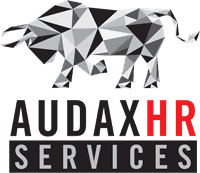What is an HRIS?
An HRIS helps companies organize and manage people-related data including:
- Employee demographic information like birth date, gender, contact information, and more
- Employee job information like manager, department, pay rates, and more
- Benefits selections
- Time-off balances and requests
Because all this information is tracked in one location, it serves as a single source of accurate data and often allows users to create reports that can be used to identify trends and make business decisions.
Why should I use an HRIS?
Organization: With an HRIS, you’ll never have to comb through filing cabinets or search through different versions of spreadsheets ever again. Every piece of information you need can be easily collected, tracked, updated, and searched in seconds.
Compliance: A good HRIS vendor will stay on top of regulations impacting HR and adapt their software to make it easy for organizations to meet compliance requirements.
Time Savings: Many tedious HR processes are made quick and simple with an HRIS. For instance, time off takes mere seconds to request and approve. Accruals and balances are tracked automatically. And after setting up these policies, HR professionals don’t have to spend any time maintaining them.
HR Strategy: When HR has fewer operational tasks to manage, they can spend their valuable skills and time on strategic HR initiatives that improve business outcomes. Improving retention, increasing productivity, and monitoring the company culture are just a few ways HR can spend their time when they have an HRIS.
Employee Experience: Top-notch employees like top-notch employers. A good HRIS can help improve employees’ perceptions of their organizations. Whether it’s a smooth and quick onboarding process, an app that allows them to look up a coworker’s contact information, or the ability to update request time off, a good HRIS can help employees have a better experience.
Convenience: Ease of use is a must with any good HRIS. Executives are impressed with their ability to do things like pull together a report in a matter of seconds and HR professionals appreciate that it only takes a few clicks.
Overall, the benefits of an HRIS often outweigh the purchase price. Of course, you should evaluate the value provided by each HRIS you’re considering to ensure you’re getting the best fit for your organization.
When should I get an HRIS system for my business?
At a certain point, it becomes impractical (and maybe even a compliance issue) to track all your employees’ information in spreadsheets. Most often, we recommend that organizations with 25 employees or more get an HRIS. At this size, it becomes difficult to gather, update, and track multiple pieces of information for each employee.
It also becomes difficult for every employee to have a meaningful relationship with each other. As such, it’s crucial for HR to carefully consider culture and the employee experience. Having an HRIS frees HR to focus on these higher elements.
Of course, this 25 employee recommendation can vary based on how advanced the HR goals of your organization are. We have some clients with fewer than 25 employees, but their leaders are incredibly invested in providing HR with the resources they need and creating an excellent employee experience. For these smaller businesses, using an HRIS allows their HR manager to focus on more strategic tasks or to handle HR as one of multiple roles.
Are all HRIS systems pretty much the same?
It’s all about the number of employees that you have. How many employees an HRIS can handle really depends on the system you choose. Not all systems are created equally because not all organizations are created equally. A company with 25 employees has very different needs than an organization of 3,000.
Some HRIS vendors peddle a one-size-fits-all approach that, more often than not, doesn’t really fit anyone very well. These vendors say that their maximum number of users is virtually unlimited. Instead, we recommend that organizations look for an HRIS that’s focused on organizations within a specific size range.
HRIS features vary widely, but the most common ones include:
- Employee database and directory
- 401k tracking
- Applicant tracking
- Benefits administration
- Payroll
- Scheduling
- Time and attendance
- Time-off tracking
- Electronic signatures
- Customizable and standard reports
- Employee self-service
More advanced systems go beyond basic tracking and provide features that allow HR professionals to improve employee experience and culture with features like:
- Employee self-onboarding
- Performance management
- Mobile apps
Audax HR will work with your organization to find what your biggest challenges are and evaluate your options based on how well an HRIS solves those problems. We will also consider usability. If the software is overly complicated, no one will use it—and if no one uses it, it doesn’t do anyone much good.
HRIS recommendations:
- Go all in: Make sure to take full advantage of the software chosen. You’re paying for it, so you should use it! Take the time to understand all the features. Get all your data migrated. Put in the time it takes, even if it takes a while to get used to new processes. The rewards of committing to the new system will far outweigh the initial pain of the setup and adjustment.
- Focus on adoption: Ensuring that your employees and executives adopt your HRIS is one of the best ways to take full advantage of your new system. Of course, the first step is selecting a user-friendly HRIS, but you can also provide training to make it easier to adopt. When employees use the software, you’ll be able to count on them for updates. Their participation in the new processes will also save you time. When executives use the software, they’ll be able to pull their own reports and benefit from the additional information provided.
- Lean on us and the vendor: Audax and your HRIS vendor will be your partners. We are here to solve your problems and foster your success. Audax finds vendors who care and provide options for training you and your employees.
- Stay up to date: We use innovative HRIS providers that regularly update and improve their software, which means you’ll constantly receive more value. However, it also means that you have to take the time to stay up to date on changes so you can take advantage of the latest and greatest features.
How long do implementations take?
Implementations can be a lengthy process, depending on the system chosen and the modules that need to be tailored to your company. This process often happens in stages over a 3-6 month period. Payroll is the first module implemented, along with time & attendance. After that, full HRIS setups may require benefit administration, performance management, onboarding, recruiting, and other modules implemented in secondary and later stages.
Choosing an HRIS is a task that shouldn’t be taken lightly. The right system can help solve your organization’s biggest problems and set your HR team free to make a massive, strategic impact on your organization. If you have any questions during your HRIS research, including whether or not an HRIS is the best option for your organization, feel free to give us a call! We’re happy to review your organization’s biggest needs and make a recommendation.
Learn more about Audax HR’s HRIS Implementation service.


